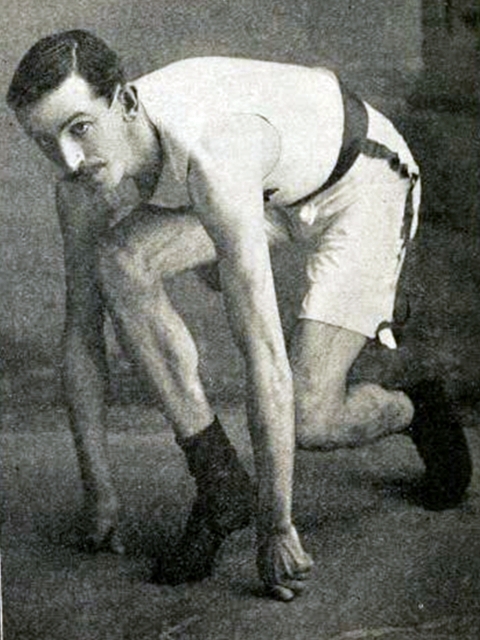Peter O'Connor

Biographical information
| Roles | Competed in Intercalated Games • Non-starter |
|---|---|
| Sex | Male |
| Full name | Peter•O'Connor |
| Used name | Peter•O'Connor |
| Born | 24 October 1872 in Millom, England (GBR) |
| Died | 9 November 1957 (aged 85 years 16 days) in Upton, Waterford (IRL) |
| Measurements | 186 cm / 66 kg |
| Affiliations | Amateur Athletic Association, IRL |
| NOC |  Great Britain Great Britain |
| Nationality |  Ireland Ireland |
| Medals | IG |
| Gold | 1 |
| Silver | 1 |
| Bronze | 0 |
| Total | 2 |
Biography
In August 1900, Peter O’Connor set his first world long jump record, and in a phenomenal 1901 season he improved his record no less than four times. He also bettered the old record on five other occasions, although these marks were not recognized because of various irregularities. The highlight of the season was a jump of 24-11¾ (7.61) off a board runway at Ball’s Bridge, Dublin, on 5 August, which was subsequently recognized as the first official IAAF record. It remained on the books for 20 years and was not beaten as an Irish All-Comers record until 1968. O’Connor also won the first of six consecutive AAA long jump titles in 1901. He was also the high jump champion in 1903 and 1904, when he shared the title in a three-way tie with John Milne, and R G Murray.
In the long jump at the 1906 Olympics O’Connor had trouble with his run-up, which resulted in a fierce dispute with the judges. They repeatedly called him for “no-jumping” and he finished in second place with a mark more than one foot below his best. Frustrated by this result, O’Connor turned to his secondary event, the triple jump, in search of a gold medal. On paper his fellow-Irishman Cornelius “Con” Leahy, the newly-crowned high jump champion and an excellent all-round jumper, was the favorite, but things went well for O’Connor and he finally won an Olympic gold medal. The Games did not go without controversy for O’Connor and his fellow Irish team-mates Leahy, John Daly and John McGough. All four went to the Games with the support of the Irish Athletic Association and GAA (Gaelic Athletic Association) and they believed they were representing Ireland. But when they got to Athens they were listed as representing Great Britain and Ireland. At the long jump medal ceremony O’Connor, already angry at the judging in the event, staged a protest by climbing up the flag pole and pulling down the British flag and hoisting the Irish one in its place in what is regarded as the first of many political protests in the long history of the Olympic Games.
O’Connor retired at the end of the 1906 season and concentrated on his solicitor’s practice, Peter O’Connor and Sons which was still going strong in Waterford more 100 years later, but he maintained a keen interest in the sport and was one of the judges at the 1932 Olympic Games in Los Angeles. He was also a spectator at the 1936 Games and press interviews at the time revealed that his style of jumping was remarkably similar to that of Jesse Owens, the winner at the Berlin Olympics.
Personal Bests: HJ – 1.88 (6-2) (1902); LJ – 7.61 (24-11¾) (1901); TJ – 14.63 (48-0) (1899).
Results
| Games | Discipline (Sport) / Event | NOC / Team | Pos | Medal | Nationality | As | |
|---|---|---|---|---|---|---|---|
| 1900 Summer Olympics | Athletics |  GBR GBR |
 IRL IRL |
Peter O'Connor | |||
| High Jump, Men (Olympic) | |||||||
| Long Jump, Men (Olympic) | |||||||
| 1906 Intercalated Games | Athletics |  GBR GBR |
 IRL IRL |
Peter O'Connor | |||
| High Jump, Men (Intercalated) | |||||||
| Long Jump, Men (Intercalated) | 2 | Silver | |||||
| Triple Jump, Men (Intercalated) | 1 | Gold |